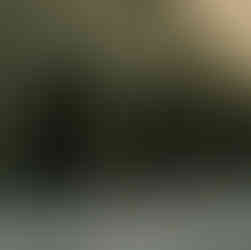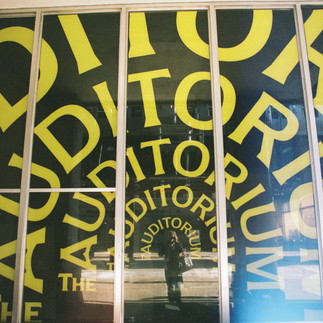From Monuments to Modernism: How Architecture Mirrors Political and Cultural Landscapes
- Synergy Magazine
- Jan 11
- 4 min read
Updated: Jan 12
By Lhea Smith | Photos by Danny Williams |
Although architects may draw inspiration from various art periods, their projects are deeply rooted in the culture and values of their time. Their work communicates ideological and political meanings (ex. communist, conservative, environmentalist, feminist values) through both functionality and aesthetics. For example, the rise in hostile architecture, targeting homeless and poor folks around the United States, represents a political climate of economic exclusion and inaccessibility. Architecture continues to serve as both a resource for power and a product shaped by it.
Chicago’s Rebuilding and Birth of Modern Architecture
When looking at architecture and its inherent political nature, it is only right to highlight the place heralded as the birthplace of modern architecture: Chicago. Chicago is known for its modern/postmodern architecture attributed to the Great Fire which led to the rebuilding of the city (specifically, the Loop).
The Great Chicago Fire began on October 8th, 1871, diminishing by October 10th. During the late 19th century, the downtown Chicago area was congested and buildings were primarily built with wood, consisting of one layer of fireproof material, allowing these buildings to be easily destroyed. The exact cause of the fire remains unknown, but it is believed to have originated in a barn on the Southwest side. The delayed arrival of firefighting equipment, combined with steady winds, allowed the flames to spread rapidly, engulfing buildings across both the North and South sides of Chicago. The fire left over 98,000 people homeless, 250 people dead, and destroyed over 17,000 buildings.
The Great Chicago Fire, though a tragedy for the city, was an opportunity for an architectural clean slate. New laws were passed requiring buildings to be constructed with fireproof materials (brick, stone, marble, limestone, terra cotta), and contractors to obtain fire insurance to prepare for future fire events. Although these laws were likely enacted with good intentions, they left little opportunity for lower-class Chicago residents to rebuild within the city. The required materials were significantly more expensive than the previously used wood, and many who previously had fire insurance could not afford to renew it. The funds distributed towards the rebuilding of the city through the Chicago Relief and Aid Society were also given to those who seemed “fit,” modeling the uneven power-dynamics between the city’s authorities, Chicago elites and working-class citizens; the lower-class citizens of Chicago lost their assets and labor, and the elites had new doors opening.
These laws, along with the rise of commercial style architecture— functionality hallmarked by steel frames, large windows and uniformity— were catered to rebuilding a city for businessmen and the Chicago elite. The architecture produced during this time were crafted for commercial use, further aligning with the city’s desire for profit and attributing to the Loop’s volume of office buildings and hotels. The businessmen of Chicago preferred “plain-looking” buildings, validating the opinions of some architects’ opposition to eclecticism. Chicago School buildings were designed to reflect its use, emphasizing architect Louis Sullivan’s principle of design, “form follows function.” The architects of the Chicago School of architecture rebuilt Chicago’s Business District not only for the working businessmen but to attract a new clientele. The city leaders’ desire for economic and technological advancement is the reason we have the Loop we know today.
Chicago’s Modern Architectural Buildings
Designed by architects Louis Sullivan and Dankmar Adler, the Auditorium was considered, at the time, to be the largest and most complex building in the United States. This ten-story structure comprises a hotel, theater, and commercial office spaces. The exterior is emphasized with repetitive window patterns and massing which is often used to convey power, stability and grandeur. Sullivan initially envisioned a more ornamented design but abandoned this approach under the influence of earlier architectural styles and the Opera Association, which favored simplicity. This shift rejected the individualism of earlier art forms, aligning instead with the desire for a "plain-looking" exterior. This building was commissioned to bring arts back into the community, but also for a civic center for events such as political conventions and charity balls. While there was a desire to house artistry and make art accessible, there was also a drive for profit. The Auditorium included both the luxury hotel and business offices to bring in other sources of income and entrances for each were separated from one another, distancing business and pleasure.
The shift from load-bearing construction to skeleton-frame construction is exemplified in the 16-story Monadnock Building designed by John Wellborn Root and Daniel Burnham. The northern half of the building’s exterior is stripped down with no ornamentation, showcasing its walls which are layered brick, similar to a brick house. This building was commissioned to have no ornamentation following the trends and becoming one with the other buildings in the city. It includes bay windows supported by steel, indicative of the rise of the steel industry in the 19th century. The innovation of steel allowed for taller and more durable buildings due to steel's malleability, allowing it to be formed into different shapes and sizes. The southern half of the building incorporates brick and terra cotta, which was previously found to be very resilient in fires. The commercial building originally consisted of shops on its first floor and offices on the others.
Completed in 1895 and designed by Holabird & Roche, the Marquette building embodied simplicity in an office building. This commercial office building included steel frames, terra cotta (for fireproofing), large windows, and a first-class experience in its lobby. The windows featured throughout the building allowed natural light and air to seep in, drawing back to the architectural want for functionality. With the building of Marquette came the office-building formula, resulting in each building being almost identical to one another. Marquette is a prime example of the uniformity the Chicago School of Architecture sought as well as a marker of Chicago’s growing working population.
Chicago’s modern architecture continues to be a representation of the wealth and power of commissioners and Chicago authorities. These buildings— Monadnock, Marquette, Auditorium—symbolize the people that Chicago’s government wanted to rebuild their city for: businessmen and elites. While social commentary may not be immediately apparent in architecture types, details in buildings may serve as hints to the political climate of a city.




















Comments